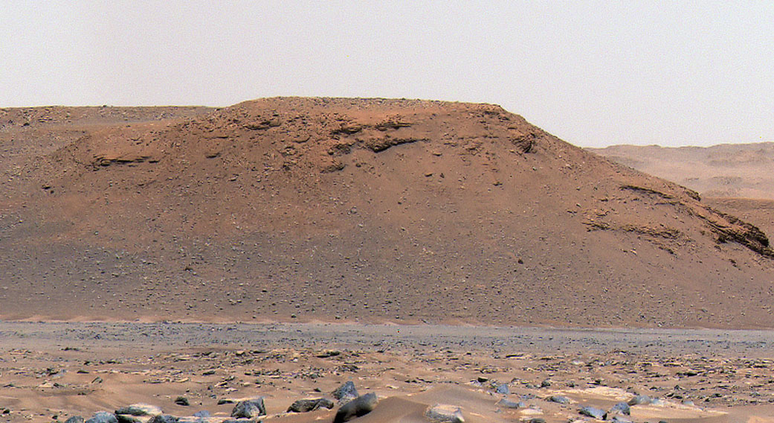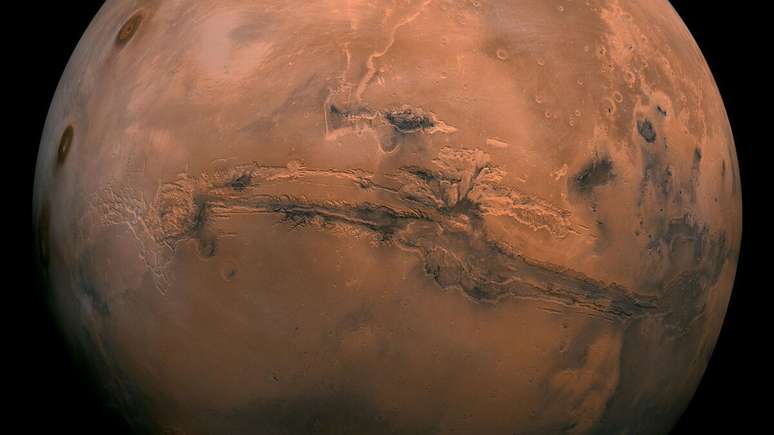Samples from Mars may have revealed the origin of organic compounds present. The discovery is also important for understanding the origin of life
The Curiosity rover collected samples from Mars that may hold clues to the origin of the organic material there. The discovery was made by scientists at the University of Copenhagen, and in addition to confirming something predicted by the institute’s researchers more than a decade ago, it could also reveal more about the formation of organic molecules on Earth – the building blocks of life as we know it. .
- Click and follow Canaltech on WhatsApp
- Was or is there life on Mars? These 3 scenarios may explain the problem
Before we go any further, it is important to remember that saying that the samples contain organic material does not mean that they contain living things. In fact, it simply indicates that there are carbon molecules there, which are like the building blocks of life. The bad news is that these molecules may come from processes outside the life.
This time, what surprised the researchers were the properties of the material, more specifically the percentage of carbon isotopes. On Earth, organic materials with these characteristics usually indicate the presence of microorganisms, but they can also form through chemical processes.
This also represents the missing piece of the puzzle that researchers at the University of Copenhagen began to put together more than a decade ago. 12 years ago, Matthew Johnson (co-author of the new study) and his colleagues ran simulations to find out what would happen if a atmosphere rich in carbon dioxide, like that of Mars, is exposed ultraviolet light from the sun.

The process is known as photolysis, and on Mars, it causes 20% of the compound to split into oxygen and carbon monoxide. Carbon, in turn, has two stable isotopes, which are carbon-12 and 13; typically, the ratio is 1 carbon-13 to 99 to 13, with photolysis acting more rapidly on carbon-12.
Therefore, the carbon monoxide produced by photolysis has less carbon-13; meanwhile, the remaining carbon dioxide has more of it. With this in mind, Johnson and his colleagues were able to predict the isotope ratio after photolysis with great accuracy and discovered two important clues to look for that ratio.
One of them was inside Martian Meteorite Allan Hills 84001which was found in Antarctica and contains minerals that form from carbon dioxide in the atmosphere. “The ‘smoke from the fire’ here is because the ratio of carbon isotopes in it matched our predictions in the simulations exactly, but there was a missing piece of the puzzle,” he explained.
Organic Molecules on Mars
“We were missing the other product of this chemical process to confirm the theory, which is what we just got,” he added. With the new Curiosity sample, the authors were able to demonstrate with a reasonable degree of certainty that the Sun split carbon dioxide in the Martian atmosphere billions of years ago, as predicted in theory. The carbon monoxide then reacted with other compounds to form complex molecules, including organic ones.
The meteorite has carbon-13-rich carbon, which is like a mirror image of the carbon-13-free samples analyzed by Curiosity. According to the team, the two samples were obtained when Mars was still a young planet, but they came from places about 50 million kilometers apart.
The isotope of the organic material is like a “fingerprint” of its origins and allowed the researchers to investigate where it came from: for the team, the origin lies in photolysis in the Martian atmosphere. “This shows that carbon monoxide is the starting point for the synthesis of organic molecules in these atmospheres,” Johnson concluded.
Now, the team hopes to find similar isotopic evidence on Earth. “It is reasonable to assume that CO2 photolysis was also a prerequisite for the emergence of life on Earth in all its complexity,” he added. However, the task here is much more challenging. “Perhaps because the surface of the earth it’s much more alive, geologically and literally, and so it’s constantly changing,” he concluded.
The article with the results of the study was published in the journal Geoscience of nature.
Source: Geoscience of nature, EurekAlert
Trends on Canaltech:
- Superman Sees Icon of His Mythology Destroyed 66 Years After Creation
- Daredevil: Reborn | Fan Theory Confirmed by Marvel Executive
- Amazon overturns Anatel’s ruling against pirated cell phones in court
- Galaxy Watch 7 will measure blood sugar without piercing the skin, the website notes
- Japan “Wins War Against Floppy Disks” and Eliminates Bureaucracy
- Paracetamol can induce risky behavior; understand
Source: Terra
Rose James is a Gossipify movie and series reviewer known for her in-depth analysis and unique perspective on the latest releases. With a background in film studies, she provides engaging and informative reviews, and keeps readers up to date with industry trends and emerging talents.






